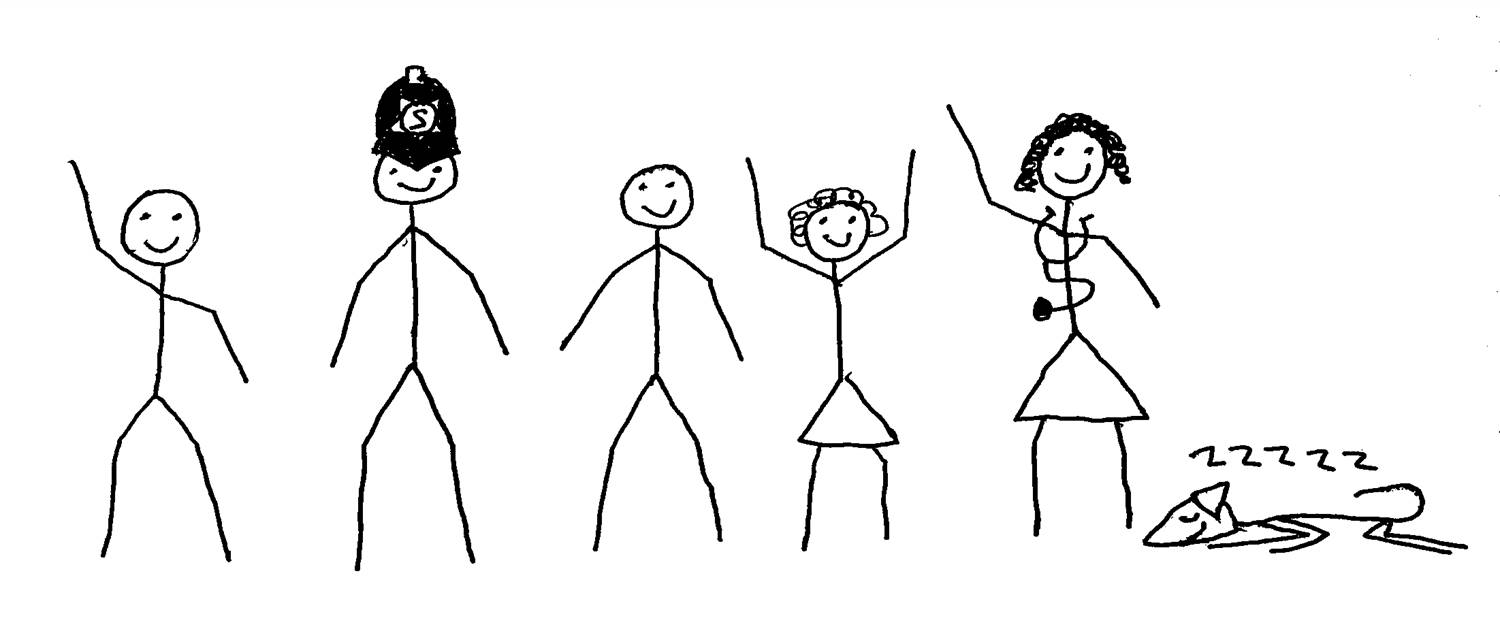
It’s been quite a few months since I last published a blog post and I’m often asked what’s happened to Stick Child and his friends. Well, they’re still about, but I have to admit that having written over 100 blog posts now I’m finding it hard to find new ways to communicate the same simple messages. Maybe I’m getting lazy, but more recently I’ve been directing interested parties towards previous posts, or the ‘useful articles’ that cover some of the main limitations of numerical targets, league tables and binary comparisons.
I guess if something outrageously new occurs to me, I might well feel compelled to blog about it, but I know I’ve been sounding like a broken record for a long time now. As Stick Child’s original mission was to explain basic performance management concepts to the under-10s, I suppose if you haven’t got it by now then you might as well give up anyway.
Also, you may remember in mid-2015, the then Home Secretary (and now Prime Minister), Theresa May, commissioned Chief Superintendent Irene Curtis (President of the Superintendents Association of England and Wales at the time) to carry out a far-reaching review into the use of targets in UK policing. The final report was published several months ago (December 2015) and contains some practical, ready-to-implement recommendations for Chief Constables, Police and Crime Commissioners, Her Majesty’s Inspectorate of Constabulary (HMIC) and the Home Office.
Mrs. Curtis’s review is probably the closest thing to a ‘Useful Guide for Better Police Performance Management’ that anyone could ever hope for. Crucially, it recognises that the dysfunctional behaviour long associated with the use of numerical targets is not the only major problem within UK police performance management – it also highlights, for example, the limitations of simplistic binary comparisons, the dreaded ‘reds and greens’ and the meaningless data presentation formats that lead to entirely predictable knee-jerk management reactions.
The report emphasises the importance of culture, people, leadership, trust, autonomy and the need for a different mindset towards performance measurement and management. It proposes simple and credible alternatives, as well as a straightforward set of guiding principles for effective police performance measurement that could be easily adopted tomorrow. It even provides case studies featuring current good practice in a handful of UK police forces. I strongly recommend that anyone who cares about policing takes the time to read it. The report can be found here.
There’s been a lot of support for the review – some forces (and senior individuals) have actively embraced its recommendations, yet several months after its publication, progress seems slow and the national picture is haphazard, to say the least. What’s needed now is some tangible and coordinated action on the part of the College of Policing and other recommendation owners, in actively promoting and implementing the recommendations – like I’ve said, a lot of them are practically ready to go now. It just needs the will to make it happen.
What’s more, none of the proposed alternatives or guiding principles endorsed within the review document are the slightest bit contentious or even particularly complicated. Only those who remain wedded to numerical targets, fixated on simplistic league tables, or obsessed with meaningless binary comparisons might struggle with the content. Take a look for yourself and you’ll wonder, “Seriously, what’s not to like!?”
Neither the Stick People, nor the review, are going away. Ultimately, either the review’s recommendations will be implemented as part of a coherent, coordinated national programme (alongside the necessary genuine endorsement, visible leadership and active support from the top), or they’ll continue to be taken up in a piecemeal fashion by those leaders bold enough to do so, simply because it’s the right thing to do. It’d be a shame if something so important was left to a handful of individuals who happen to care.
Fundamentally, Mrs Curtis’s review represents an opportunity to completely transform UK police performance management within a very short timeframe – it would be criminal to squander it.
Right, the Stick People have stick people stuff to attend to and I’m going to lie down in a darkened room.
Anyway, here’s a few blog posts to be getting on with…
Three Different Things – The difference between targets, measures and priorities.
Right Measures, Measured Right – Why, and how, to measure stuff properly.
Avoidable Harm – One of my exasperated attempts at trying to explain why numerical targets are arbitrary.
The Wrong Conversation – Why numerical targets are completely the wrong starting point for trying to understand performance.
Nonsense – Total sense of humour failure about the uselessness of binary comparisons.
It’s Criminal – Why crime rates aren’t even a police performance measure anyway.
…and there’s plenty more where they came from. Happy reading!


I’m part-way through reading this at the moment:
Obviously it focuses on the exceptional cases, and I’m not daft enough to think that every case is handled in the manner of the ones he writes about. However, in several of the cases so far I’ve had a strong feeling that the police officers involved were focused on the targets that they had been set. Combine that with ineffective defence lawyers and the inevitable happens.
I’d hazard a guess that progress to a new paradigm is slow because, for people who haven’t seen a truly different way of working, if you take away the targets, they mistakenly think it means virtual anarchy. They may think it means no measures at all, just some kind of namby pamby arrangement whereby everyone is just left to their own devices and we hope for the best. Its a pretty scary place, and without traditional targets, I’ve seen all sorts of disfunctional activity introduced in an attempt to reassure those with accountability that everything isn’t all spiralling out of control. (OK so the targets only gave an illusion of control anyway, but hey…)
As logical as systems thinking is to those of us who get it, to those who don’t/haven’t been introduced to it, it’s invisible. They need help or at least the opportunity to learn.